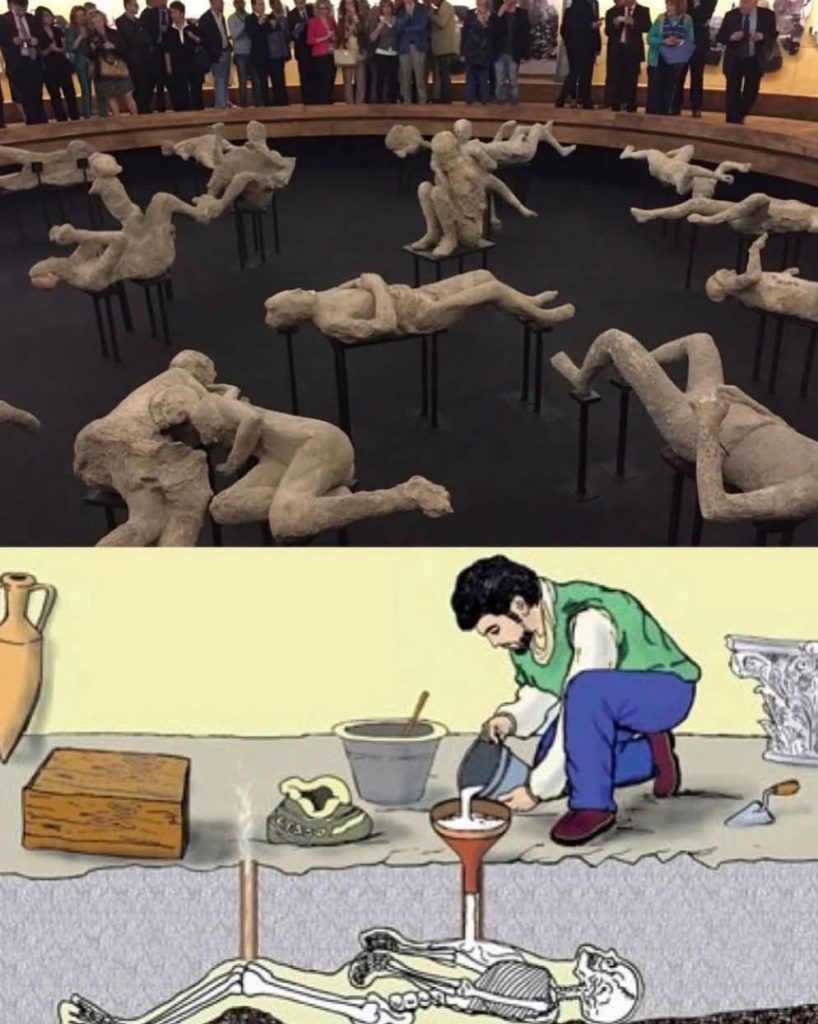In the silent ruins of Pompeii, where time stood still beneath layers of volcanic ash, modern science has begun to speak for those long silenced. The catastrophic eruption of Mount Vesuvius in 79 AD may have ended lives in an instant, but recent breakthroughs in genetic research are revealing stories that have been buried for nearly two thousand years. These findings are not just enhancing our understanding of daily life in ancient Rome—they’re transforming it. With each strand of DNA examined, a clearer, richer picture emerges, offering insight not only into how these people lived, but who they truly were.

One of the most compelling discoveries came from a site known as the House of the Golden Bracelet, named for the stunning jewelry found there. At first glance, this home seemed to offer a snapshot of a typical Roman family: a man, a woman, and two children, one of whom was thought to be their son. This interpretation was widely accepted by archaeologists for decades. The presence of valuable objects suggested affluence, and the grouping of the bodies implied familial ties. However, new genetic evidence has entirely rewritten this long-held assumption. DNA analysis revealed that none of the individuals found in the house were biologically related. The man adorned with the golden bracelet was not the father, nor were the children siblings or offspring of the woman. This astonishing revelation forces us to reconsider what we believe about Roman domestic life. It opens the possibility that this household was composed not of a nuclear family, but of people connected through different forms of social bonds—perhaps a master and his servants, or individuals bound by economic or personal circumstances rather than blood. Such findings challenge modern expectations and remind us that social structures in ancient Rome were far more complex than our textbooks often suggest.
Another captivating case emerged from the House of the Cryptoporticus, a structure once believed to contain the remains of two young women, affectionately known as the “Two Maidens.” Their delicate positioning led to romanticized assumptions about who they were—possibly sisters, perhaps lovers. But once again, DNA testing shattered these illusions. One of the individuals, long thought to be female, was revealed to be male. Moreover, the two shared no maternal connection, disproving the theory of sisterhood. This discovery not only redefines the identities of these individuals but also highlights how much our interpretations have been shaped by visual cues and assumptions, rather than hard evidence. It underscores the importance of integrating modern science into archaeological research, giving us tools to correct our biases and reach closer to historical truth.
These personal stories are just fragments of a much broader tapestry. Genetic analysis of multiple individuals throughout Pompeii indicates a population more diverse than previously imagined. Some of the analyzed DNA bore markers connecting individuals to regions as far as the eastern Mediterranean. This supports historical theories about Pompeii being a bustling cosmopolitan center within the Roman Empire, enriched by trade, migration, and cultural exchange. The city’s position along major trading routes likely made it a melting pot of languages, traditions, and identities. These findings breathe new life into what it meant to be Roman in the first century—clearly, it encompassed a broader and more inclusive spectrum than we might have guessed.
The success of these scientific revelations owes much to the unique preservation of Pompeii’s victims. When Vesuvius erupted, it covered the city in a thick layer of ash, preserving not just buildings but also the final moments of its inhabitants. In the 19th century, archaeologists developed the method of creating plaster casts by filling the voids left by decayed bodies. These casts captured the postures and expressions of those who perished, providing hauntingly detailed physical records. Today, researchers are taking this preservation a step further by extracting DNA from the bones within the casts. With state-of-the-art technology, they are decoding these genetic sequences, shedding light on ancestry, health conditions, familial relationships, and more. It is a marriage of historical preservation and modern science—one that gives voice to the voiceless and identity to the forgotten.
This fusion of archaeology and genetics is revolutionizing the field. We are moving beyond the surface-level reconstructions of ancient life and diving deeper into the social fabric of the past. What was once viewed purely through the lens of material culture—pottery, architecture, and artifacts—is now complemented by biological data that offers unprecedented insight into ancient identities and communities. These aren’t just anonymous victims frozen in time; they were real people with intricate stories, ambitions, relationships, and cultural backgrounds.
And perhaps most significantly, these discoveries are helping to humanize history. By understanding the people of Pompeii as individuals rather than as statistics or symbols, we create a deeper emotional connection to the past. The tragedy of Vesuvius is no longer just a distant catastrophe; it becomes a collection of human experiences, each one valuable and worthy of remembrance. It reminds us that history isn’t just about kings and battles—it’s about families, workers, migrants, and communities whose voices are only now being heard.
For those wishing to explore these findings further, comprehensive reports have been published in respected scientific journals such as Current Biology, as well as through official communications from the Archaeological Park of Pompeii. These resources delve into the specific methodologies and implications of the genetic studies, offering a detailed look into how science and archaeology are working together to bring ancient lives into the present.
In the end, Pompeii continues to astonish us—not just through its art and architecture, but through its people. As modern technology peels back layers of ash and assumption, we find a world more diverse, more intricate, and more deeply human than we ever imagined. The story of Pompeii is far from over; in fact, thanks to the power of DNA, it may just be beginning.





